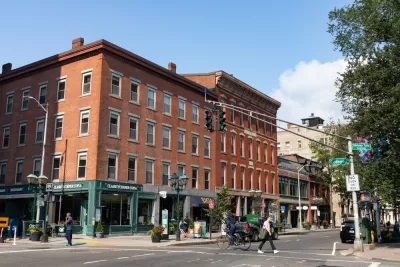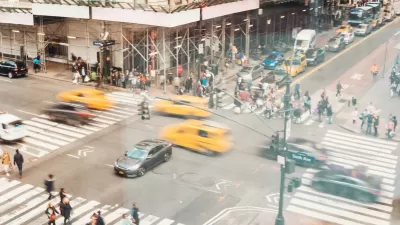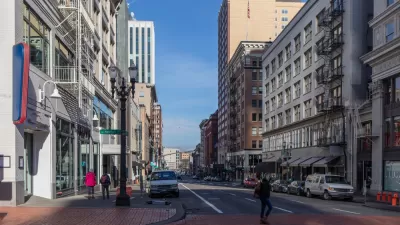The proposed legislation could energize efforts to eliminate fatal crashes and fix the structural flaws that make roads inherently more dangerous.

A bill making its way through the Connecticut state legislature would codify the state’s commitment to Vision Zero and require municipalities to actively plan for safer and more accessible roads for all users. In an op-ed published on CT News Junkie, Kerri Ana Provost argues in favor of the bill, pointing out that “One month into 2023, 42 collisions resulting in 43 pedestrian deaths during 2022 were entered into the [Connecticut Crash Data Repository] database.”
Provost parses the data to understand the nature of the crashes, revealing that pedestrian distraction did not factor into any of the fatal crashes in 2022. “Looking back at 2021, only two of the 58 victims were noted as being distracted, and the nature of it was described as being outside of a vehicle, not on a phone.”
Among other initiatives, the bill would require cities to create Complete Streets or Comprehensive Safety plans and allow automated traffic enforcement, which is shown to reduce serious crashes. Provost urges legislators to support the bill and its promise for systemic change, noting that making streets safe for all is about much more than just telling pedestrians to be more careful. “Instead of shunning victims of traffic violence for a split-second poor decision they may have made, we should look at how our system sets us up for failure.”
Traffic safety advocates around the country are making similar calls for reorienting road safety efforts toward addressing infrastructure and design issues rather than focusing singularly on pedestrian and driver awareness and education.
FULL STORY: Vision Zero Bill Would Address Causes of Pedestrian Crashes

Alabama: Trump Terminates Settlements for Black Communities Harmed By Raw Sewage
Trump deemed the landmark civil rights agreement “illegal DEI and environmental justice policy.”

Planetizen Federal Action Tracker
A weekly monitor of how Trump’s orders and actions are impacting planners and planning in America.

The 120 Year Old Tiny Home Villages That Sheltered San Francisco’s Earthquake Refugees
More than a century ago, San Francisco mobilized to house thousands of residents displaced by the 1906 earthquake. Could their strategy offer a model for the present?

In Both Crashes and Crime, Public Transportation is Far Safer than Driving
Contrary to popular assumptions, public transportation has far lower crash and crime rates than automobile travel. For safer communities, improve and encourage transit travel.

Report: Zoning Reforms Should Complement Nashville’s Ambitious Transit Plan
Without reform, restrictive zoning codes will limit the impact of the city’s planned transit expansion and could exclude some of the residents who depend on transit the most.

Judge Orders Release of Frozen IRA, IIJA Funding
The decision is a victory for environmental groups who charged that freezing funds for critical infrastructure and disaster response programs caused “real and irreparable harm” to communities.
Urban Design for Planners 1: Software Tools
This six-course series explores essential urban design concepts using open source software and equips planners with the tools they need to participate fully in the urban design process.
Planning for Universal Design
Learn the tools for implementing Universal Design in planning regulations.
Clanton & Associates, Inc.
Jessamine County Fiscal Court
Institute for Housing and Urban Development Studies (IHS)
City of Grandview
Harvard GSD Executive Education
Toledo-Lucas County Plan Commissions
Salt Lake City
NYU Wagner Graduate School of Public Service





























